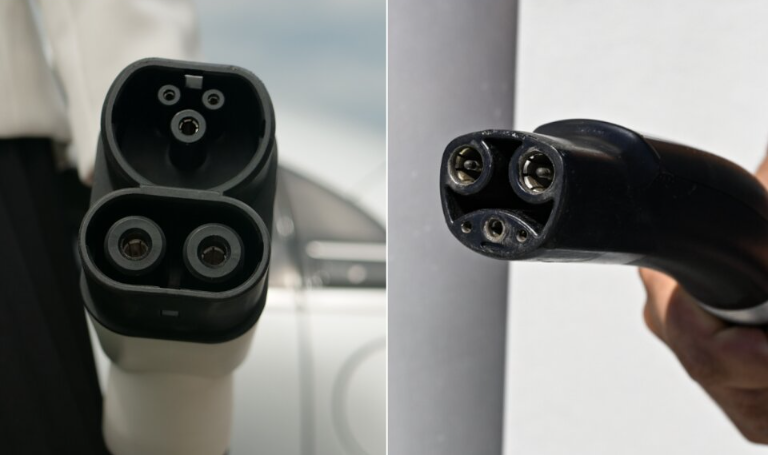CCS Electric Car Charging: A Comprehensive Guide
On this page
As the global adoption of electric vehicles (EVs) accelerates, reliable and efficient charging infrastructure becomes a critical need. The Combined Charging System (CCS) has emerged as one of the most versatile and widely adopted EV charging standards. This article explores CCS's features, advantages, and how it compares to other charging technologies, offering insights into its role in shaping the EV charging landscape.



Designed to meet the needs of North American EVs.
Widely adopted across Europe and other regions.
These connectors are robust and designed to ensure efficient and safe power transfer during the charging process.
These connectors are robust and designed to ensure efficient and safe power transfer during the charging process.

Locating a CCS charging station is straightforward, thanks to apps like Zap-Map and Shell Recharge. These tools provide real-time updates on the availability, location, and operational status of charging points.
Use an app or online map to find the nearest CCS charging point.
Position your EV correctly to access the charging port.
Attach the CCS connector to your EV’s charging port.
Start charging via an app, RFID card, or the station’s interface.
Track the charging status on your app or the station’s display.
Once charging is complete, unplug the connector and return it to its holder.
Both CCS and CHAdeMO are DC fast-charging systems, designed to deliver power directly to an EV’s battery. However, they differ in functionality and compatibility:
CCS integrates AC/DC charging into a single port, while CHAdeMO requires an additional connector for AC charging. Without an adapter, CHAdeMO is not compatible with Type 1 and Type 2 charging ports.
CCS’s universal design has made it the preferred standard for many automakers, ensuring broader compatibility across EV models.
CCS (Combined Charging System) and NACS (North American Charging Standard) are two widely used DC connector standards in the North American EV market. While both support fast charging, they differ in origin, design, and performance.
NACS, developed by Tesla, has not yet been introduced in Europe. It features a lightweight, hybrid connector design where a single plug handles both Level 2 charging and fast DC charging. NACS supports charging speeds of up to 250 kW.
CCS, on the other hand, uses a modular design where part of the connector supports Level 2 charging, and the entire connector facilitates fast DC charging. CCS boasts a higher maximum charging speed, estimated at 350 kW, making it a faster option for compatible EVs.
The primary distinction lies in the connector’s shape and capabilities, with CCS offering greater speed and versatility while NACS focuses on simplicity and integration.

Yes, CCS is significantly faster than standard Type 2 charging. While Type 2 chargers typically handle AC power for slower charging rates, CCS adds two extra power contacts, enabling ultra-fast DC charging.
CCS technology offers several distinct advantages:
CCS chargers support charging rates up to 350 kW, outperforming Tesla’s Superchargers, which are capped at 250 kW. Some vehicles, like the Lucid Air, leverage CCS’s capabilities to achieve exceptional charging speeds, adding up to 200 miles of range in just 12 minutes.
Unlike Tesla’s proprietary NACS system, which currently caters primarily to Tesla vehicles, CCS is embraced by a wide range of automakers, including Hyundai, Kia, Volvo, Mercedes-Benz, and Lucid.
CCS supports seamless plug-and-charge technology, enabling EV owners to connect their vehicles and initiate charging without manual authentication, much like Tesla’s Superchargers.
While Tesla’s Superchargers dominate in terms of individual charging ports, CCS charging stations are more widely distributed across diverse locations. This accessibility often makes CCS chargers more convenient for users outside Tesla’s network.
The charge rates might differ from vehicle to vehicle, but the answer to this question is yes.
Generally speaking, CCS charging is fast and will allow you to fully charge the battery of your vehicle in significantly less time than a standard EV charger.
The versatility and widespread adoption of CCS make it a cornerstone in the expansion of EV infrastructure. Efforts are underway to further enhance its capabilities, including integrating bi-directional charging for vehicle-to-grid (V2G) applications.
As the automotive industry transitions towards electrification, CCS’s universal appeal positions it as a key player in supporting EV adoption worldwide. Whether you’re an EV enthusiast or a new adopter, CCS’s compatibility, speed, and accessibility ensure a smoother and more efficient charging experience.
As the automotive industry transitions towards electrification, CCS’s universal appeal positions it as a key player in supporting EV adoption worldwide. Whether you’re an EV enthusiast or a new adopter, CCS’s compatibility, speed, and accessibility ensure a smoother and more efficient charging experience.
The Combined Charging System (CCS) stands as a testament to the power of collaboration in addressing global challenges. By offering a reliable and fast charging solution, CCS is accelerating the shift toward sustainable transportation. Whether you're charging at home, on the road, or at a public station, CCS ensures your EV is ready to go when you are.
